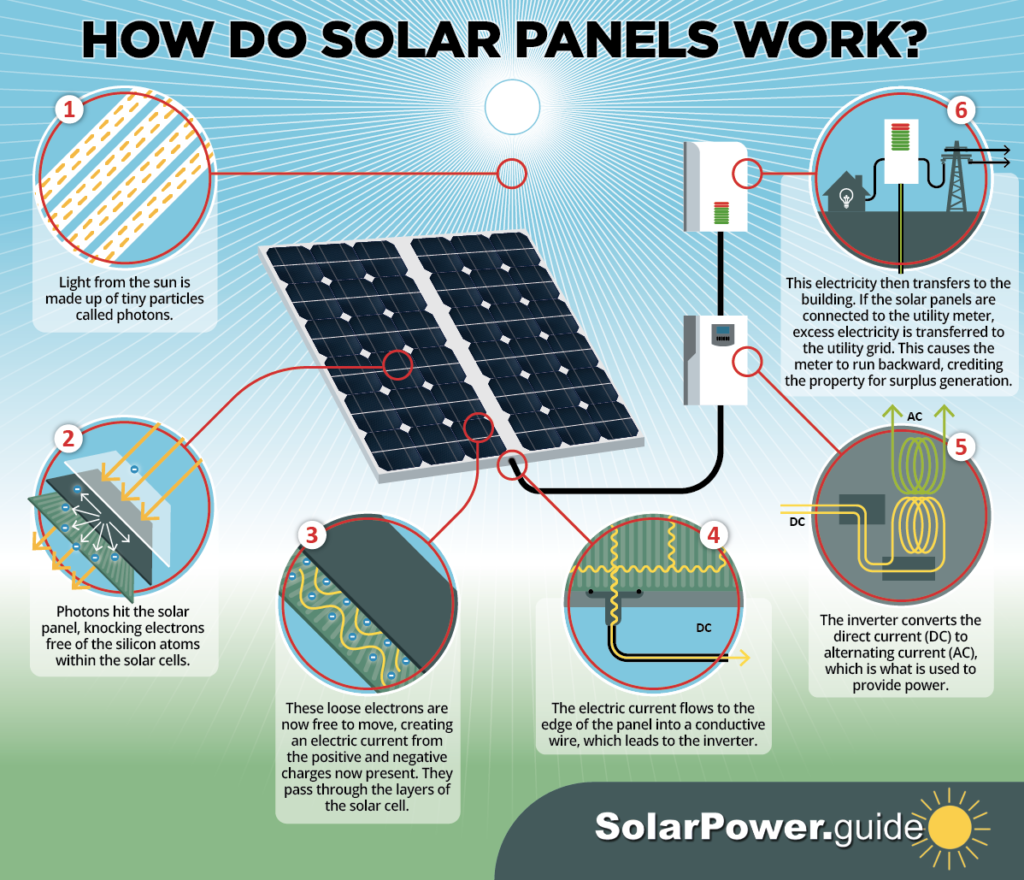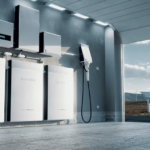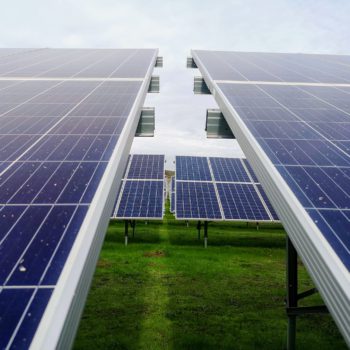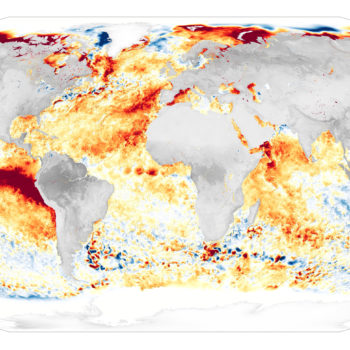|
|
As the world becomes increasingly aware of the need to reduce our reliance on non-renewable energy sources, solar panels have emerged as a popular solution.
Harnessing the power of the sun, these devices convert sunlight into electricity, providing a clean and sustainable energy source. However, while the benefits of solar panels are clear, there is still some debate about the best way to use them.
One key question is whether solar panels should be placed in direct sunlight or if they can still function effectively in the shade.
On the one hand, direct sunlight may seem like the obvious choice for solar panels. After all, they rely on the sun’s energy to generate power.
But what about situations where direct sunlight is not available, such as on cloudy days or in areas with a lot of tree cover? Can solar panels still function effectively in these conditions? And what about the potential impact of shade on the longevity and performance of solar panels?
In this article, we will explore the benefits and drawbacks of both direct sunlight and shade for solar panels, providing you with the information you need to make an informed decision about how to best utilize this renewable energy source.
Do Solar Panels Need Direct Sunlight to Be Efficient and Worth the Investment?
Solar panels rely on sunlight to generate electricity through the photovoltaic effect, where photons from sunlight knock electrons loose from atoms, creating an electric current.

Source: https://solarpower.guide/solar-energy-insights/how-do-solar-panels-work
It is commonly believed that direct sunlight is necessary for solar panels to be efficient and worth the investment.
While it is true that solar panels perform best under direct sunlight, they can still generate electricity under various levels of shade or diffused light.
Understanding Solar Panel Efficiency in Direct Sunlight
Solar panels indeed achieve their highest efficiency when exposed to direct sunlight.
Direct sunlight provides the maximum amount of energy for the panels to convert into electricity. The efficiency of solar panels is typically measured by their conversion efficiency, which represents the percentage of sunlight that can be converted into usable electricity.
According to the Department of Energy, commercial solar panels with crystalline silicon PV cells have laboratory energy conversion efficiencies of over 20% for multi-crystalline cells and over 25% for single-crystal cells. This means that they can convert around 20-25% of the sunlight they receive into electricity.
For industrial applications, the efficiency ranges from 18% to 22% under standard conditions.
Direct sunlight provides the optimal conditions for solar panels to reach their peak efficiency. It allows the panels to capture the full spectrum of sunlight, including both visible light and ultraviolet (UV) and infrared (IR) radiation.
This abundance of energy enables the panels to produce a greater amount of electricity.
What Are Peak Sunlight Hours?
Peak sunlight hours, also known as solar peak hours or peak sun hours, refer to the period of the day when sunlight intensity is at its highest. It is during these hours that solar panels receive the most sunlight and, consequently, generate the highest amount of electricity.

source: https://unboundsolar.com/solar-information/sun-hours-us-map
Peak sunlight hours can vary depending on factors such as geographic location, time of year, and weather conditions. Generally, peak sunlight hours occur when the sun is high in the sky, and the solar panels are directly facing the sun.
In regions closer to the equator, peak sunlight hours tend to be longer and more consistent throughout the year.
For example, areas near the equator may have an average of 5 to 6 peak sunlight hours per day.
On the other hand, regions farther from the equator or those with significant seasonal variations may experience shorter peak sunlight hours, ranging from 2 to 4 hours per day.
It’s important to note that peak sunlight hours should not be confused with the total number of daylight hours.
While the sun may be visible for a longer duration during the day, not all of those hours provide the same intensity of sunlight. Therefore, it is the concentrated period of high-intensity sunlight that is most valuable for solar energy generation.
Understanding the concept of peak sunlight hours is crucial for determining the size and capacity of a solar panel system.
By considering the average number of peak sunlight hours in a specific location, it becomes possible to estimate the amount of electricity that can be generated and subsequently design a solar power system to meet specific energy needs.
As a rule of thumb, for maximum efficiency, standard solar panels need 4 hours of peak sunlight of cumulative solar radiation over a day to make it a worthwile investment. Of cours, this is just an average number; it may vary based on your custom system, available incentives, geographic location, and so on.
The Impact of Shade on Solar Panel Performance
While direct sunlight provides the optimal conditions for solar panels to reach their maximum efficiency, it is not always available. Shade is a significant factor that can impact the performance of solar panels.
When a solar panel is shaded, it can significantly reduce its output by blocking the sunlight that the panel needs to generate electricity.
The amount of energy lost due to shading depends on several factors, including the duration of shading, the degree of shading, and the location of the shaded area on the panel.
Even small amounts of shading can reduce the performance of a solar panel significantly. When one solar cell in a panel is shaded, the entire panel’s output can be impacted as the cells are connected in a series.
This effect is known as the “Christmas lights effect,” where a single shaded cell in a solar panel can reduce the output of the entire panel, much like a single faulty bulb in a string of Christmas lights can dim the whole string.
How Does the Weather Impact Solar Panels Efficiency?
The weather plays a crucial role in determining the efficiency of solar panels. While direct sunlight is ideal for optimal performance, various weather conditions can affect the output of solar panels.

Cloudy Days and Solar Panel Efficiency
Cloudy days are a common occurrence in many regions, and they can impact the efficiency of solar panels. Cloud cover reduces the intensity of sunlight reaching the solar panels, resulting in lower electricity generation.
Solar panels can still produce electricity on cloudy days, although at a reduced rate compared to sunny days. On average, solar panels can generate around 10-25% of their maximum capacity under cloudy conditions.
The actual amount of energy produced depends on the thickness and type of cloud cover. Thin, scattered clouds have a lesser impact on solar panel efficiency compared to thick, dark clouds.
It’s worth noting that even on cloudy days, solar panels can still contribute to overall energy production. Additionally, advancements in solar panel technology, such as the development of bifacial solar panels, have improved their performance under diffuse or indirect sunlight conditions.
The Impact of Temperature on Solar Panel Efficiency
Temperature also plays a role in the efficiency of solar panels. Solar panels typically operate more efficiently at lower temperatures, with their performance declining as the temperature increases.
The relationship between temperature and solar panel efficiency is due to the physics of semiconductor materials used in solar cells. As temperature rises, the movement of electrons within the solar cells becomes more chaotic, leading to a decrease in overall efficiency.
For every 1-degree Celsius increase in temperature above the standard testing conditions (usually around 25°C or 77°F), solar panel efficiency can decrease by around 0.5%.
However, it’s important to note that the decrease in efficiency due to temperature is relatively small and often compensated by the increased sunlight intensity during warmer months.
Furthermore, modern solar panel designs incorporate features to mitigate the impact of temperature. Some panels have built-in ventilation systems or utilize materials that help dissipate heat more effectively, allowing them to maintain higher efficiency levels under higher temperatures.
Enhancing Performance in Shaded Areas
Recognizing the impact of shade on solar panel performance, researchers and manufacturers have been working on developing shade-tolerant solar panels. These panels aim to improve electricity generation even in partially shaded or low-light conditions.
Bypass Diodes
One solution commonly used in shade-tolerant solar panels is the incorporation of bypass diodes. Bypass diodes are electronic components that allow the current to bypass the shaded area of a solar panel, ensuring that the unshaded sections can still generate electricity.
Solar panels with bypass diodes are typically divided into smaller sections, known as strings, which are connected in parallel. If shading occurs on one section of the panel, the bypass diodes redirect the current to flow through the unshaded sections, minimizing the impact of shading on overall panel performance.
Bypass diodes are particularly effective when dealing with partial shading, where only a portion of the solar panel is affected. However, it’s crucial to note that bypass diodes are not a solution for complete shading, as they cannot compensate for the complete absence of sunlight.
Microinverters and Shade Mitigation
Another approach to shade tolerance is the use of microinverters or power optimizers. Instead of a single inverter for the entire solar panel array, microinverters or power optimizers are installed on each individual solar panel.
Microinverters convert the DC (direct current) electricity produced by each panel into AC (alternating current) electricity, directly at the panel level. This decentralized approach allows each panel to operate independently, mitigating the impact of shading on the overall system.
By employing microinverters or power optimizers, shade on one panel has minimal impact on the performance of other panels in the system. Each panel operates at its maximum potential, regardless of shading on neighboring panels.
Microinverters or power optimizers also offer additional benefits, such as improved monitoring and diagnostics capabilities. Since each panel is equipped with its own microinverter or power optimizer, it becomes easier to identify and troubleshoot any issues that may arise, ensuring the overall system operates efficiently.
Bifacial Solar Cells
Shade-tolerant solar panels often incorporate advanced cell technologies that enhance their performance in shaded conditions.
One such technology is known as “bifacial” solar cells.
Bifacial solar panels have the ability to capture sunlight not only from the front but also the rear side. This enables them to utilize the reflected and scattered light from the surroundings, including the light that passes through shading.
They can provide a significant boost in electricity generation, especially in areas with diffuse light or when there are reflective surfaces nearby, such as white roofs or snow-covered ground.
These panels can capture additional sunlight and convert it into electricity, making them an attractive option for shaded environments.
Maximizing Solar Panel Performance in Shade-Prone Environments
In environments where shade is a persistent challenge, there are several strategies to maximize solar panel performance and increase the overall efficiency of the system.

Optimal Panel Placement
Strategic panel placement is essential in shade-prone environments. By carefully selecting the installation location, panels can be positioned to minimize the impact of shade during peak sunlight hours.
For example, panels can be installed on sections of the roof or ground that receive the maximum amount of direct sunlight throughout the day. Analyzing shading patterns and using tools like solar pathfinders or digital shading analysis can help identify optimal panel placement.
Tree Pruning and Vegetation Management
Trees and vegetation can provide valuable shade relief, but they can also hinder solar panel performance. Regular tree pruning and vegetation management can help minimize shading and maximize sunlight exposure on solar panels.
Trimming or removing branches that cast shadows on panels during peak sunlight hours is an effective approach. This proactive maintenance ensures that solar panels receive uninterrupted sunlight and maintain their efficiency.
In some cases, it may be necessary to consider alternative options for tree placement or select shade-tolerant tree species that have a minimal impact on solar panel performance. Working with a professional arborist or landscape architect can provide valuable insights and guidance in managing vegetation around solar installations.
Cleaning and Maintenance
Regular cleaning and maintenance of solar panels are essential for maximizing their performance, especially in shade-prone environments. Dust, debris, and bird droppings can accumulate on the surface of panels, reducing their efficiency.
Cleaning solar panels at regular intervals, particularly in areas with higher levels of air pollution or dust, ensures maximum light absorption and improves overall energy generation. Following manufacturer guidelines for cleaning procedures and using soft brushes or sponges and non-abrasive cleaning solutions helps prevent damage to the panels.
Additionally, routine maintenance checks should be conducted to identify any issues, such as loose wiring, damaged cells, or faulty components. Prompt repairs or replacements can prevent further performance degradation and ensure the longevity of the solar panel system.

source: https://savingenergyforlife.com/solar-panel-maintenance-in-3-easy-steps
Work With Professionals to Optimize Solar Panel Efficiency
Working with professionals in the field can provide valuable expertise and ensure optimal efficiency of your solar panel system.
Professionals can conduct a thorough site assessment and design a customized solar panel system based on factors like sun exposure, shading patterns, and energy needs. This ensures optimal panel placement and configuration for maximum sunlight exposure.
Professional installers also ensure proper and secure installation, complying with safety standards and local regulations. This minimizes the risk of damage and ensures long-term performance.
Finally, working with experts keeps you informed about the latest technologies and advancements in solar panel designs. This allows you to take advantage of new products that can improve your system’s performance or increase its efficiency even in shaded conditions.
Conclusion
Solar panels are a valuable source of clean and renewable energy. While direct sunlight is optimal for maximizing their efficiency and return on investment, shade-tolerant technologies and strategic installation approaches can mitigate the impact of shade and enhance overall performance in shaded environments.
Understanding the dynamics of direct sunlight, peak sunlight hours, and the impact of weather conditions on solar panel efficiency is crucial in determining the most effective utilization of solar energy resources.
By considering factors such as shade patterns, tree management, cleaning, and maintenance, solar panel owners can ensure that their systems continue to generate electricity efficiently and contribute to a sustainable energy future.
As solar panel technology continues to advance, we can expect further innovations that improve shade tolerance and overall performance, making solar energy an increasingly viable option for a wider range of environments and applications.
Embracing solar power and optimizing its utilization in both direct sunlight and shade will play a pivotal role in our transition to a cleaner and more sustainable energy landscape.













No Comments